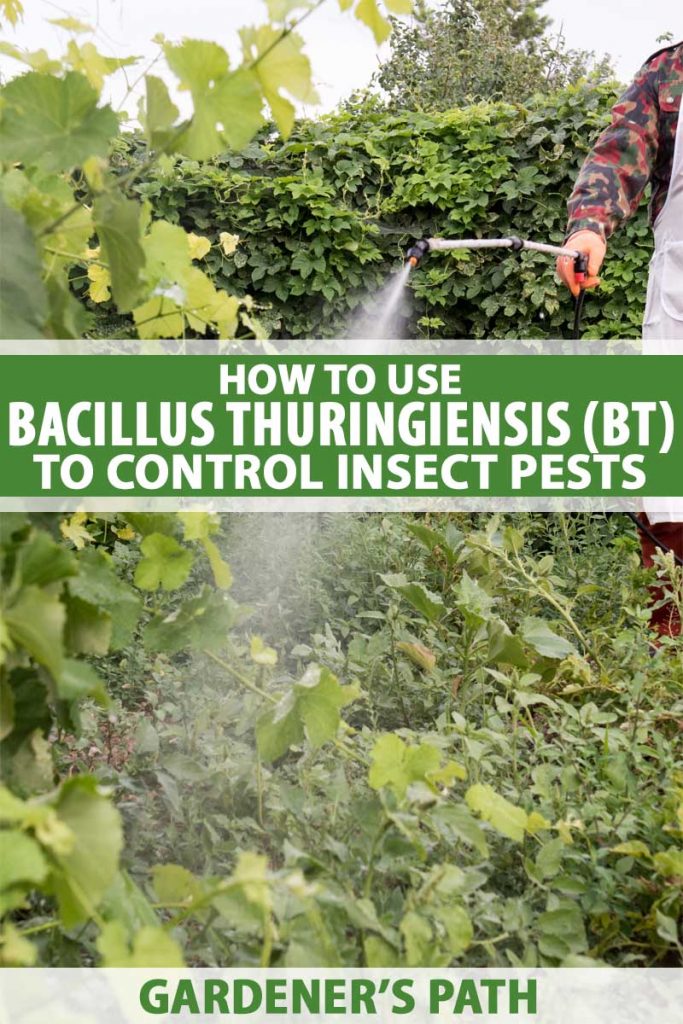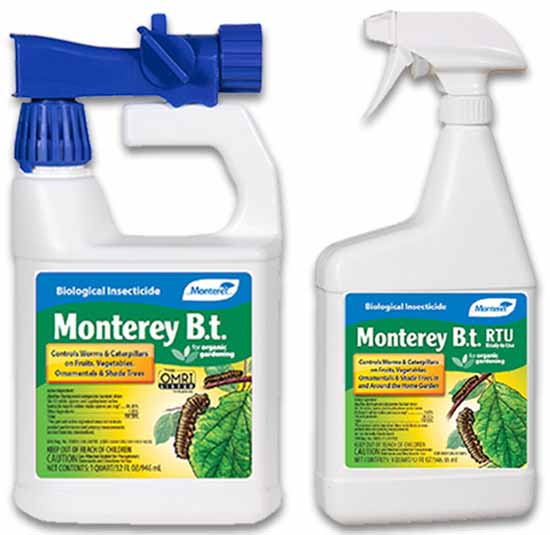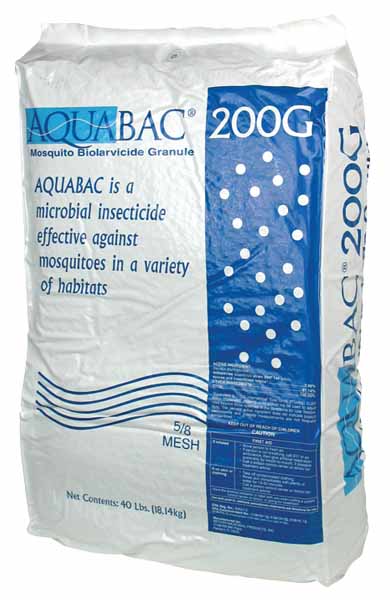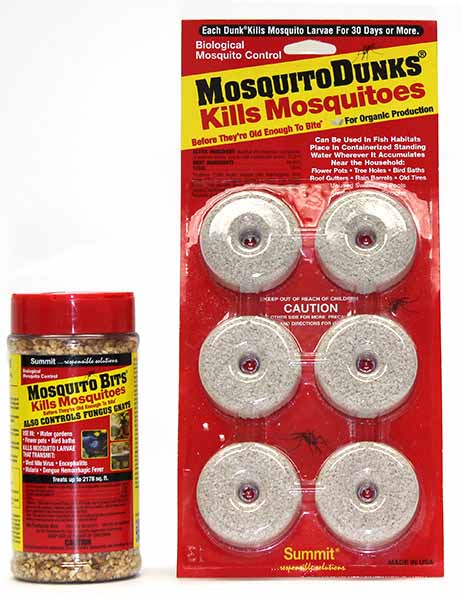[ad_1]
What is BT?
Bt is the abbreviation for bacteria that were named Bacillus thuringiensis in 1911 after the discovery that they could kill Mediterranean flour moths in the German city of Thuringia.
These common soil bacteria have been used as microbial insecticides for the last century.
Farmers in Europe were the first to recognize their potential in 1920, and US farmers started using them in 1958. The Environmental Protection Agency (EPA) registered them as a pesticide in 1961.


We link to vendors to help you find relevant products. If you buy from one of our links, we may earn a commission.
They can be used on foliage, food storage facilities, soil, or water environments.
Why are these bacteria so widely used? They occur naturally, affect very specific insects, and are relatively inexpensive and safe for humans, birds, fish, and most beneficial insects.
However, for them to work effectively, you need to know what type of insect you want to target and make sure that you purchase a strain that will kill that particular species.
The National Pesticide Information Center reports that there are more than 180 pesticide products registered that contain Bt! And many have been approved for use in organic agriculture.
We at Gardener’s Path will cover the strains of Bt that are widely used. With thousands of strains out there, we can’t go over all of them!
We will list the strains that you are likely to encounter and describe how to use them.
What Kinds of Insects Does Bt Kill?
Each strain of Bt will kill different kinds of insects. Some strains are very specific for a few species, while others will kill across a large class of insects.
The most commonly used types are shown below:
Since the insect has to eat the toxin to be affected by it, that means that insects that don’t feed on the surface of plants are not likely to come into contact with the toxin and therefore will not be affected by it.
For example, soil insects are not likely to eat Bt. Insects that quickly bore inside plant tissue, like corn earworm, may not be exposed to enough Bt to be affected by it.
And beneficial insects – busy grazing on other insects and not plants – are likely to be unaffected by the bacteria.
How Does Bt Kill Insects?
Bt will only kill insects that eat the toxin and are susceptible to it. This is not a toxin that will kill on contact like most insecticides.
Once eaten, the toxin affects a specific switch in the stomach – like a lock and a key. This switch (a receptor) activates a reaction that makes holes in the stomach.
The contents, including the toxin and normal gut bacteria, spill out into the rest of the insect’s body, and it dies of infection and starvation.
It can take the insect hours or days to die. Typically, the insect remains on the plant as it is dying, so don’t be alarmed if there are still insects on your plants even after treatment. They are probably on their deathbeds.
The insects are usually the most susceptible when the larvae are small.
How to Kill Caterpillars With Bt
Bacillus thuringiensis kurstaki (Btk) is the best known and most widely used strain of Bt. It kills the larvae of many types of moths and butterflies.
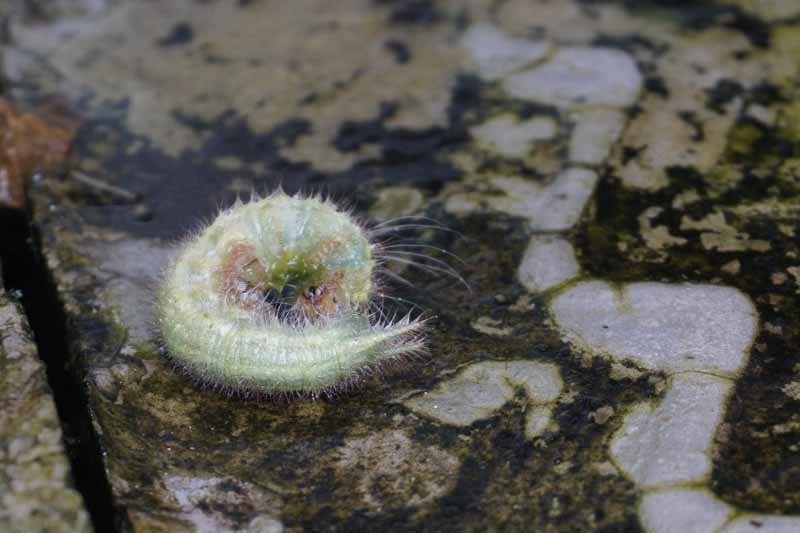

This means that you can control most caterpillars with Btk. This includes many types of caterpillars more commonly known as “worms” that feed on broccoli, cabbage, and other crucifers.
Monterey Btk Liquid via Arbico Organics
Other caterpillars commonly controlled by Btk include the European corn borer, tent caterpillars, gypsy moths, and other forest caterpillars. There are even formulations designed to control Indian meal moth larvae in stored grain.
Several Btk formulations are available from Arbico Organics.
Another strain of Bt, Bacillus thuringiensis aizawai (Bta) kills the larvae of wax moths in honeycombs.
How to Kill Mosquitoes and Flies With Bt
Fortunately, there is a strain of Bt that controls the larvae of many biting flies and mosquitoes! Bacillus thuringiensis israelensis (Bti) is commonly used by governments or non-governmental organizations to control mosquitoes on a large scale.
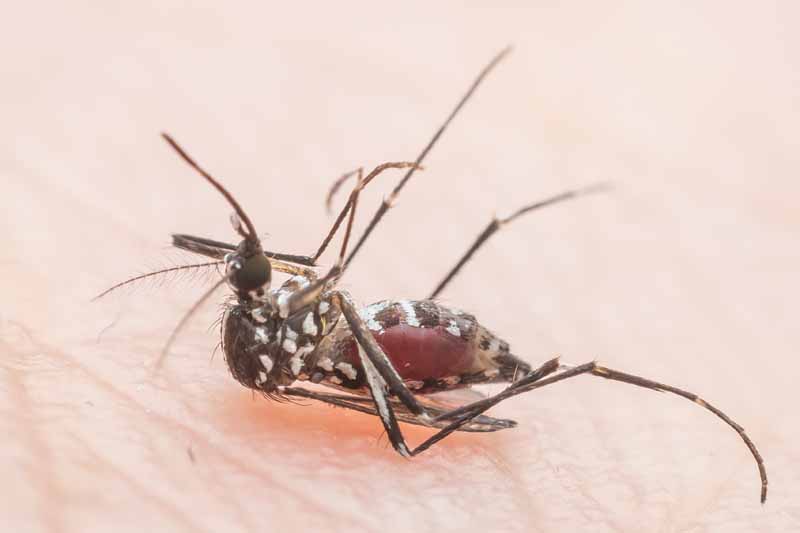

For example, the World Health Organization switched to using Bti to kill mosquitoes as part of its anti-malaria campaign rather than use chemical pesticides.
AQUABAC® 200G Granular Bti Mosquito Control
You can buy Bti from Arbico Organics to kill mosquitoes on your property. Mosquito dunks are a very popular product to kill these creatures in your water garden or rain barrels.
Mosquito Bits & Dunks Combo Kit
Bti is very effective against Aedes and Psorophora mosquitoes. However, if you are trying to kill Anopheles or Culex, you will need to use greater amounts of this insecticide.
As far as flies go, you can use Bti to kill black flies but not houseflies, blow flies, or stable flies.
You can also use some strains to control the larvae of fungus gnats in greenhouses or mushroom production. In this case, you would apply the Bti as a drench to the soil (for plants) or culture media (for mushrooms).
How to Kill Beetles With Bt
You may or may not know that beetles comprise the largest number of species in the world, and there are more than 350,000 of them! Fortunately, most of them are not garden pests.
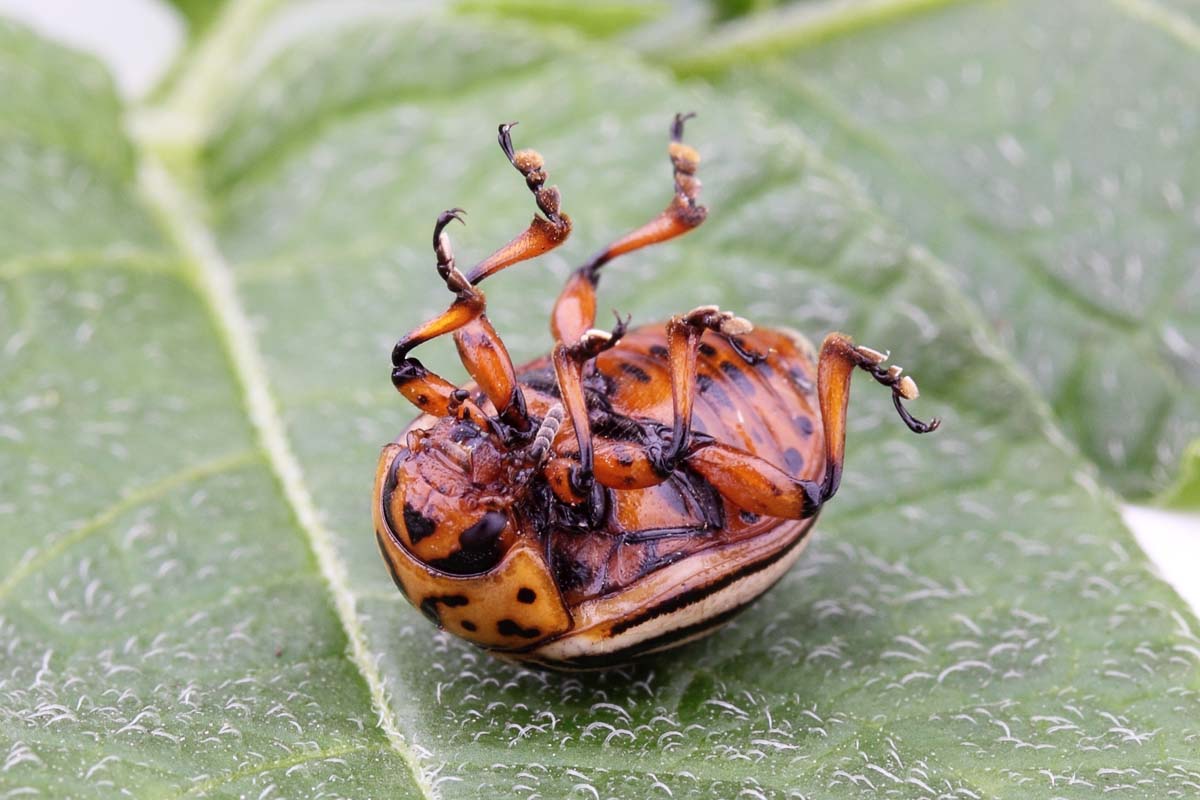

However, the Bt strains available only affect a few types of beetles. Some of them are major pests, though.
The bacteria to use to control beetle larvae are either Bacillus thuringiensis san diego or Bacillus thuringiensis tenebrionis.
Beetles that can be controlled include the Colorado potato beetle, elm leaf beetle, and willow leaf beetle.
Tips For Applying Bt
First, make sure you have the right strain for the pest you want to control! You should also make sure that the insect will be in its larval stage when you apply the Bt.
You will have better control if the larvae are small. There will be less damage to the plants because the little insects won’t eat as much.
If you treat larger larvae, they will eat more of the plants and cause greater damage. Also, they may morph into the reproductive phase and become insensitive to the toxin.
And avoid high pH water! A pH greater than 8 is what activates the toxin in the insect’s gut, and you don’t want it to be activated ahead of time and then be useless by the time you apply it.
The spray will be more effective if you add a spreader or sticker to the tank mix. Use the spray within 12 hours of mixing. Make sure that you are spraying both the top and bottom surfaces of the leaves.
While it can survive for years in the ground if adsorbed to soil particles, Bt is rapidly inactivated by the UV radiation in sunlight.
Many people spray their plants in the evening, so the toxin can work overnight before being inactivated by the sun the next day.
The bacteria are sensitive to temperature and must be stored at 50 to 60°F. Do not expose the bacteria to hot or cold temperatures, which can kill them.
Precautions to Take
Bt has tested extremely well when examined for toxicity or the ability to cause cancer in animals – even at extremely high doses.
This microbe does appear to be truly safe for humans – even when eaten. Human stomachs are acidic, not alkaline, so they digest the Bt toxin.


However, some products are used in the form of a dust, and there have been a few instances of allergic reaction to the dust when the product was applied.
Just to be safe, you should wear gloves, long sleeves, and trousers when you apply the microbial insecticide. And then wash thoroughly afterwards.
Take Steps to Minimize Resistance
Like any pesticide, the targets of Bt can develop resistance, although this rarely happens.
The diamondback moth, a pest of cabbage and other cruciferous plants, is the primary example of an insect that has developed resistance in the field.
Many insects have shown resistance in the laboratory and are being studied.
If you use Bt on your farm, the EPA will require you to take some steps to prevent resistance. One way is to alternate its use with synthetic insecticides.
Another is to rotate your crops. Since different kinds of insects feed on different crops, you would be using a different type of Bt.
The large variety of Bacillus thuringiensis strains available enables gardeners, farmers, and mosquito control experts to control an array of insect pests.
Since the strains are highly specific to the insects targeted, residual effects against other organisms are not a concern.
The widespread usage of Bt has been a boon to farmers and to people who are now sprayed with these bacteria to kill mosquitoes instead of DDT!
And for more biological control tips, check out these guides next:
[ad_2]
Source link

